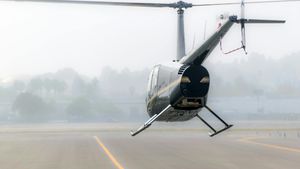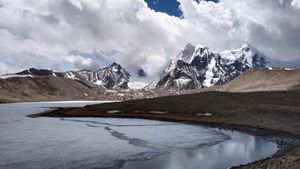The Iranian economy is currently facing significant turmoil, as high inflation, low economic growth, and the depreciated value of the Rial weigh heavily on its prospects. Reports show inflation has remained above 30% annually since 2018, pushing many middle-class Iranians toward poverty and bringing attention to the dire need for reform.
According to economic analysts, the root causes of Iran's economic crisis are both internal and external. Internally, factors such as widespread corruption, mismanagement, substantial budget deficits, and inadequate investment are exacerbated by poor policy decisions. Externally, harsh sanctions imposed mainly by Western governments—chiefly the United States—have crippled economic growth.
Iranian leadership, represented by President Masoud Pezeshkian, has identified three key transformations necessary for fostering economic recovery: diplomatic engagement with the West, reforms to fuel subsidies, and progress toward a digital economy. Each of these paths, though necessary, is fraught with challenges.
The current economic picture has been complicated by political events and leadership changes. “The situation is different and much more difficult than the previous time. Lots of things should be done by the other side to buy our confidence. We haven’t heard anything but the ‘nice’ word, and this is obviously not enough,” Iranian Foreign Minister Abbas Araghchi remarked, highlighting the complexity of negotiating with Western powers (reported by Sky News).
On the ground, inflation continues to be the most pressing issue, with monthly data reflecting deteriorated purchasing power where everything from food to fuel is becoming increasingly unaffordable for ordinary citizens. Economic growth remained stagnant with nominal GDP per capita decreasing from $4,741 to $4,501 by 2023, providing stark evidence of the economic downturn.
During this tumultuous period, geopolitical developments have also influenced Iranian policies. Following significant social unrest spurred by the death of activist Mahsa Jina Amini, which catalyzed national protests, there has been growing urgency among leaders to find solutions. Khamenei has acknowledged the complexity of diplomatic relationships, stating, “Behind diplomatic smiles, there are always hidden and malicious enmities and grudges. We need to understand and know [the other side and what is necessary]” (reported by Amwaj.media). Such statements reflect Tehran's cautious approach to potential negotiations.
An increase of 62% depreciation of the Rial against the US dollar from January 2024 to January 2025 mirrors the overarching economic instability and external pressures. Efforts to instigate structural changes to end budget deficits and inflationary pressures remain elusive, yet discussions about reforming fuel subsidies have gained traction within the government.
"Efforts financially supported by the US government not only have assisted me but have also kept me alive and out of jail," remarked one Iranian researcher involved with human rights advocacy pointing to the external support systems available, which may soon be imperiled by changing political tides (Iran International).
Subsidy reforms pose another complex challenge. The Iranian government has hinted at restructuring the subsidy system, which often drains the national budget. Though any increase may provide immediate relief, economic experts warn it could lead to unrest reminiscent of previous turmoil from past subsidy cuts.
Compounded by all of these issues, electricity shortages continue to stifle economic productivity, costing the nation significant losses daily. Industry experts estimate economic damages from electrical disruptions at around $224 million per day, indicating dire needs for investment and infrastructural integrity.
Moving toward digitalization is also seen as pivotal for revitalizing the economy, with calls for innovation surfacing within the young, tech-savvy generation. Yet, many existing laws and regulations impede progress, making transitions slow and cumbersome. Success hinges on the alleviation of sanctions and regulatory barriers.
The interaction of all these aspects reveals just how interconnected Iran's economic, political, and social landscapes are. Uneven progress on key reforms may lead to the resurgence of public protests, which the government is acutely aware of. There is serious concern over how reforms can be pushed forward without inciting additional unrest, particularly if subsidy reforms are perceived as unjust.
Currently, the Iranian government is working diligently to rekindle international relations, particularly focusing on its ties with Western nations amid the uncertain political structure under President Trump's return to office. The new administration's approach could either impede or accelerate the possibility of sanctions relief, which remains the linchpin for Iran's economic revival.
Failure to navigate these fraught waters could worsen economic conditions, leading to social unrest and migration fueled by despair among Iranian citizens. The balance between reform and stability is tenuous, and the leadership remains on high alert for signs of discontent among the populace. Therefore, the stakes are incredibly high for all parties involved, potentially signaling significant geopolitical shifts involving Iran and its international relations.



